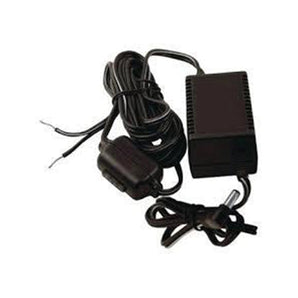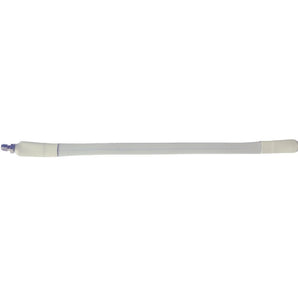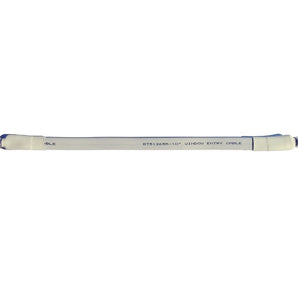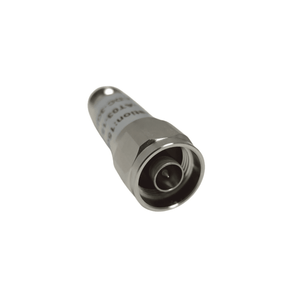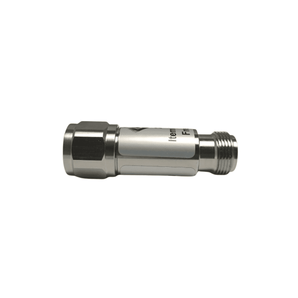When looking for ways to improve your WiFi coverage, most people are overhwelmed with all the different options - mesh networks, WiFi extenders, powerline adapters, WiFi repeaters, and WiFi boosters.
The most popular choices are mesh networks and WiFi extenders, as the latter three fall under the WiFi extender family. In other words, WiFi extenders, WiFi adapters, and WiFi boosters are almost the same thing, but with slightly different functionalities.
Since the top two options are mesh networks and extenders, we will be focusing on these in order to help you make an informed decision.
What are WiFi Range Extenders and Mesh Networks?
WiFi extenders and mesh networks are devices that can be used to extend your WiFi coverage and improve your wireless signal strength.
How do WiFi Range Extenders Work?
WiFi range extenders are single units that broadcast your existing WiFi signal into an area with little to no signal. They do so by wirelessly connecting to an access point, usually a WiFi router, or using an ethernet cable to establish a wired connection. Normally, the extender should be placed half-way between the area with poor signal strength and the router. However, if you decide to conduct an ethernet backhaul, with a long enough ethernet or gigabit ethernet cable, you could place the extender anywhere since the signal is being transmitted through the cable rather than through the air.

To pair the devices together, it’s as simple as pressing the WPS button on both devices, and voila, consider your range extended. At least, that’s what most people hope for. Since different manufactures (Tp-Link, Asus, D-Link, etc.) have different set-up and configuration processes, managing the extender can sometimes be a hassle.
After the connection has been established between both devices, the extender creates its own network for your wireless and smart home devices to use. For example, if your home network’s SSID is Nacho WiFi, the extenders SSID would be Nacho WiFi_EXT. While you’re roaming around your home, you will have to manually switch between networks; if your closer to the extender make sure you're connected to the EXT network, and vice versa. The only time your devices will automatically switch between networks is if you are 100% out of range from one network and within range of the other.
What is the Difference Between WiFi Extenders, Boosters, and Repeaters?
WiFi extenders, boosters, and repeaters are terms that are often used interchangeably. They are all basically the same thing, with minor differences.
Similar to extenders, boosters and repeaters both need to be connected to a router and plugged into a powerplug to improve the WiFi's coverage area. WiFi repeaters capture your network’s existing signal and rebroadcast that same signal into the desired areas. On the other hand, unlike extenders or repeaters, WiFi boosters capture your network’s existing signal and boost or amplify it for better coverage.
Do WiFi Extenders Reduce Speed?
A WiFi extender does not reduce the speeds provided by your internet service provider (ISP). However, the devices connected to the extender might experience slower speeds than when connected to the router.
When transferring data through the extender, the information has to make a wireless hop from the extender to the router, and back. That one hop degrades the speed a little bit because wireless links can’t send and receive data at the same time.
Furthermore, some extenders are more susceptible to speed loss than others. Single-band extenders use the 2.4GHz band to transmit data. Unfortunately, since they use the same frequency band to send and receive information, they can reduce your internet bandwidth and speed by more than 50%.
To overcome speed loss issues, dual-band extenders use both frequencies to communicate with the connected devices; one band solely communicates with the wireless router, and the other one talks to the WiFi devices.
Do WiFi Extenders Really Work?
Yes.
As long as you have a reliable internet connection in your home and place the extender in the best location, they are guaranteed to improve your WiFi's signal range.
Keep in mind that they are not designed to stretch the signal throughout your entire home, though it’s tempting to think that because of the name. Extenders are more like spot fixers, designed to improve the dead zones in one or two areas.
Overall, wireless range extenders are an affordable and simple way of improving your WiFi network in small spaces.
What are the Advantages and Disadvantages of WiFi Extenders?
Advantages:
- Simple WiFi extending solution for small areas
- Eliminates dead spots
- Affordable
Disadvantages:
- You have to manually switch between networks
- Not ideal for a large home with multiple floors
- Configuration and set-up process can be difficult
How do Mesh Networks Work?
Unlike extenders, which are just an add on to your existing network, mesh network systems replace your WiFi network, including your router. They utilize a set of mesh extenders, commonly known as nodes or satellites, that work together to create a large seamless wireless network. The nodes should be strategically placed in areas that need a WiFi connection. Each node needs to be within range of another to blanket your entire home with a strong signal.
One node is required to be physically connected to the modem via ethernet. That node will be your existing routers replacement and become your WiFi networks mesh router; it will wirelessly share its internet connection with the other nodes. Every node operates under the same network name (SSID), so unlike extenders, as you walk around your house, your wireless devices will automatically connect to the closest node.

Mesh nodes are made up of extremely smart technology. They use adaptive routing or dynamic routing technology to map the most efficient route when transferring information. In addition, they are self-configuring, meaning that the networking system won’t slow down if one route is congested, or if one node stops working. In fact, the system will register the congestion or the unresponsive node and re-route all traffic to travel through a different path, avoiding speed slow-downs in the process.
The set-up process is pretty simple. Most mesh systems, such as Google Nest WiFi, Netgear Orbi, Linksys Velop, Tp-Link Deco, Netgear Nighthawk Mesh, and Amazon Eero, come with user-friendly apps that assist you in the installation process and allow you to monitor the network. Through the app, you can create guest networks, test the quality between connection points, remove users from the network, add parental controls, and more.
Do Mesh Networks Reduce Speeds?
Since mesh networks utilize multiple nodes to transfer information, depending on how many nodes you have, the data can undergo various wireless hops to reach the router. As mentioned earlier, every hop decreases the speed just a little. Most of the time it goes unnoticed. They utilize extremely smart artificial intelligence that helps mitigate speed loss when transferring wireless signals. Most people who have mesh networks experience consistent signal throughout their home.
When transferring data, mesh WiFi systems use dual-band or tri-band technology. Similar to WiFi extenders, dual-band devices use two GHz frequency bands – one communicates with the router and the other with the wireless devices. Tri-band devices reduce congestion and improve WiFi speeds by using one 2.4GHz band and two 5GHz bands. In other words, tri-band devices have double the bandwidth on the 5GHz band, which results in better speed and less congestion.
Is Mesh WiFi Better?
Even though mesh networks and WiFi extenders both improve your wireless coverage, mesh networks are a lot smarter, work a lot better, and can expand your WiFi signal much further than extenders.
They are ideal for:
Gamers
One thing gamers hate is lagging in the middle of a kill shot. If the lagging is not related to a slow internet service plan, mesh networks will improve your wireless connection. Sure, extenders might also be able to help, but as we mentioned earlier, depending on the extender, the broadcasted signal might not be strong enough to fix lagging issues.
Streaming Videos
If you love to stream movies at the best possible quality, you need a lot of bandwidth and speed. Most streaming companies recommend a consistent connection of at least 30 Mbps to stream a 4K video without a problem. Sometimes maintaining a consistent connection can be difficult, especially when the router is located in the downstairs office and your room is on the opposite end of the second floor.
Extenders are more than capable of providing the necessary speeds, but the bandwidth might be the issue. After wirelessly connecting to the router, the bandwidth is reduced and the available bandwidth is shared between all connected devices. As a result, each device might experience slower speeds, which are not ideal for streaming.
Even though mesh nodes also lose bandwidth after wirelessly connecting to the mesh router, they do a better job of managing incoming and outgoing data. With their advanced technology, you will always have a consistent signal in your room, allowing you to stream 4K movies without buffering.
Large Homes
Large single-level and multi-level homes are more likely to experience dead zones in multiple areas, they tend to have more floors and walls blocking the signals path.
Many people would rather purchase WiFi extenders to patch up the dead spots because they are the cheaper option, but they might not be the best one. Having multiple extenders will result in multiple networks, which can be inconvenient. You will manually have to switch to the closest networks while you move from room to room in your house.
Mesh networks, on the other hand, are seamless and hassle-free. You don’t have to worry about remembering to switch networks every time you move from the living room to your bedroom; your wireless device will automatically connect to the closest node. Plus, the total cost of a mesh network might be cheaper than purchasing multiple extenders.
With that being said, if you can afford a mesh network, it would be ideal to invest in one.
Do Mesh Networks Really Work?
Yes.
Similar to extenders, as long as you have a reliable internet connection in your home and the nodes are strategically located, you will see immediate results.
Mesh networks are actually one of the most effective ways of improving your internet connection in large areas. Most kits come with 2–3 nodes, but if that’s not enough, additional nodes can be added to the network, allowing the signal to cover your entire house.
What are the Advantages and Disadvantages of Mesh Networks?
Advantages
- Whole-home WiFi coverage
- Easy set-up and configuration process
- Eliminates dead spots
- Seamless connection
- Self-configuring
- Easy to add and remove nodes
- Aesthetic design
Disadvantages
- Pricier than extenders
WiFi Range Extender and Mesh Network Differences
Now that we have discussed how both networks work, let's talk about their main differences.
Coverage
Extenders solve connectivity issues in smaller areas; typically, they can increase the range by 30m² - 180m².
Mesh networking kits, however, provide whole-home coverage and are perfect for large homes; on average they can cover areas from 180m²-500m²+. With additional mesh nodes, the coverage area can be extended even more.
Network Connection
After extenders have been set-up, they create their own network and users have to manually switch back and forth. On the other hand, mesh networks establish a seamless connection, meaning devices automatically connect to the closest node.
Set-Up Process
WiFi extenders can be confusing to set up. Since they can work with routers from different manufacturers, the extender usually needs to be manually configured to work with the router. Unfortunately, sometimes compatibility issues arise. To make the set-up process as simple and fast as possible, mesh networks utilize a user-friendly app. On average, it takes less than 15 minutes to get the whole system up and running.
Flexibility
It’s possible to have more than one extender in your home or office. They must all be wired or wirelessly connected to the router, never to each other. In addition, keep in mind that each extender will create its own network. To avoid network interferences, each network must have a different SSID. In contrast, mesh network apps make adding and removing nodes simple and fast.
Price
There is a big difference in price between the two networks. The best WiFi extenders will cost between R 800 - R1500, while the best mesh systems range from R3200 - R5000+, with additional nodes ranging from R1500 - R3000.
Should I Get a WiFi Extender or Mesh Network?
Before you go and spend your hard earn money, it’s best to check if you need an extender or mesh network by inspecting your current router and analyzing your network.
Router’s Location and Age
Sometimes signal issues are triggered by the location or age of your router.
Routers don’t have the most aesthetically pleasing design, and when coupled with tangled cables, they become an eyesore. For that reason, many people hide them behind furniture, in a closet, or under a desk, without realizing the negative effect it will have on their WiFi signal. Materials like metal, concrete, plaster, windows, and wood are notorious for blocking and weakening wireless signals. The best solution would be to move the router into a central location to reduce the amount of WiFi blocking materials, improve the signal's range, and reduce the number of dead spots.
If moving the router did not work, or if moving the router is not practical, check if your router needs to be upgraded. Older routers are more susceptible to signal interference, slower speeds, and shorter ranges. New routers, especially those with the newest WiFi technology (WiFi 5 and WiFi 6), have better range capabilities and can support faster speeds.
Analyze WiFi Network
If your router is up to date and in the best possible location, we recommend analyzing your WiFi network. Doing so will show you which areas have little to no signal. Based on the results you will be able to choose between a WiFi mesh network or WiFi extender.
The best and most accurate way of measuring your wireless signal strength is using decibel milliwatts (dBm) or testing your internet's download speeds, not by the WiFi logo on your phone.
Your network can be analyzed using free apps like Network Cell Info Lite. With these tools, you should conduct various signal strength tests and speed tests in the locations where your WiFi connection matters.
Signal strength can range from -40 to -120 dBm; anything between -30 and -67 dBm is good, between -67 and -80 dBm you will experience spotty signal, and anything below -90 dBm is completely unreliable. The lower the number the worse the signal is.
Internet speeds are measured in megabits per second (Mbps); they can range from 0 to the speeds you signed up for with your ISP. For example, if your internet plan gives you up to 600 Mbps, your speed test will range from 0-600 Mbps. The higher the speed, the better.
Which is Better for Me, Range Extenders or Mesh Networks?
After you have analyzed your WiFi network, consider how many weak signal and dead zone areas there are, the size of your home, and the number of floors your home has.
If you found one or two areas with poor signal, and you live in a small home or apartment with three bedrooms or less, a range extender will be plenty.
On the other hand, if you live in a single level home with more than three rooms, consider the location of the dead zones. Are they adjacent to each other or on opposite ends? Range extenders are able to stretch the coverage to improve the signal in adjacent rooms. However, it makes more sense to use a mesh network when the dead zones are on opposite sides rather than purchasing multiple extenders. This way you can have a consistent speed throughout your entire home and don’t have to manually switch between multiple networks. In addition, there wouldn’t be a huge price difference. A good extender will cost around R1000, multiply that by two, and you are looking at R 2000. Some 3-unit mesh networks cost as low as R 2400, only a R400 difference.
Multiple level homes are more likely to have numerous areas with an unreliable signal; they are larger and have more walls and floors interfering with the signal waves. To improve your internet signal’s coverage evenly through multiple floors, a mesh network would be the best option.
Contact Us
Bolton Technical is a leading provider of cell phone signal boosters for homes, vehicles, and commercial buildings. We specialize in consumer-friendly kits as well as customized RF systems for cellular, public safety two-way radio, DAS, and WiFi.
We’re here to assist with any issues you might be experiencing with poor cell service. Contact us today, or call us at 011 749 3085.
Take advantage of our system design and installation services. Learn more or call us for a free consultation: 011 749 3085.



